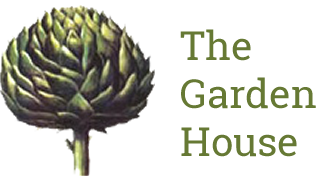Planning ahead on the vegetable plot or allotment
Posted:19 January 2012
Plan out your vegetable plot on paper before working out what seed you want to order from the catalogues, so you don’t over order or end up with two much of the same things.
DIARY NOTE: Seedy Sunday takes place on takes place on Sunday 5th February at Hove Town Hall, Norton Road BN3 4AH, 10am 4.30pm. Entry is just £2, children free. It’s a great opportunity to buy heritage and other seeds, onion sets, and potatoes for chitting.
This is also a good time to think about crop rotation.
Crop Rotation The principle of crop rotation is to grow specific groups of vegetables on a different part of the allotment each year. This helps to reduce a build-up of pest and disease problems and it organises groups of crops according to their cultivation needs. Pests and diseases tend to be crop specific – for example carrots don’t suffer from potato blight and club root only affects brassicas!
Crop rotation is used in allotment plots and gardens usually for annual vegetable crops. Perennial vegetables, those that come up every year (such as rhubarb, asparagus and artichokes, both globe and Jerusalem) can remain in the same bed.
Some annual crops such as cucurbits (courgettes, pumpkins, squashes, marrows and cucumbers), French and runner beans, salads (endive, lettuce and chicory) and sweetcorn can be grown wherever there is space this is because they don’t tend to suffer from as many serious pests and diseases as brassicas, roots, legumes and potatoes. Just try to avoid growing them on the same piece of ground year after year.
Different crops have different nutrient requirements Changing the plot that you grow crops on each year reduces the chance of particular soil deficiencies developing as the balance of nutrients removed from the soil tends to even out over time. For example; legumes have the ability to fix nitrogen from the air into the soil using nitrogen-fixing nodules on their roots, brassicas on the other hand need nitrogen to produce green leafy growth, the part we eat and so it makes sense to grow brassicas on the plot that was used to grow legumes last year.
Weed control Some crops, like potatoes and squashes, with dense foliage or large leaves, suppress weeds, thereby reducing maintenance and weed problems in following crops. Onions, on the other hand, are not good at suppressing weeds due to their lack of foliage and so it is a good idea to follow onions on from potatoes.
Why not try the ‘three sisters’ system a North American idea where you grow squashes on the ground to provide shade and suppress weeds, sweetcorn or sunflowers as a support for pole beans to grow up this enables you to grow three crops on one plot, in a relatively small space.
Pest and disease control Soil pests and diseases tend to attack specific plant families over and over again. This can be a real problem for the commercial grower, just because some of the serious diseases such as clubroot can remain in the soil for up to thirty years! If you rotate your crops this means that pests tend to become less of a problem as the spores or eggs of the pest won’t be able to build up when in the soil. White onion rot tends to be a real problem on allotments and crop rotation can help to avoid this.
If you are new to your allotment divide it into sections of equal size (depending on how much of each crop you want to grow), plus an extra section for perennial crops, such as rhubarb and asparagus.
The following groups should be used in the rotation scheme:
Brassicas: Brussels sprouts, cabbages, cauliflowers, kale, kohl-rabi, oriental greens, radish swedes and turnips are brassicas too, just look at the flowers on them and you can see why many people think they are roots.
Legumes: Peas, broad beans (French and runner beans suffer from fewer soil problems and can be grown wherever there is space).
Onions: Onions, garlic, shallots, leeks.
Potato family: Potato, tomato, (pepper and aubergine suffer from fewer problems and can be grown anywhere in the rotation).
Roots: Beetroot, carrot, celeriac, celery, Florence fennel, parsley, parsnip and all other root crops.
Move each section of the plot a step forward every year so that, for example, brassicas follow legumes, onions and roots, legumes, onions and roots follow potatoes and potatoes follow brassicas.
Here is a traditional three-year rotation plan where potatoes and brassicas are important crops:
Year one
Plot 1: Potatoes
Plot 2: Legumes, onions and roots
Plot 3: Brassicas
Year two
Plot 1: Legumes, onions and roots
Plot 2: Brassicas
Plot 3: Potatoes
Year three
Plot 1: Brassicas
Plot 2: Potatoes
Plot 3: Legumes, onions and roots
If you have the space you can practise a four-year rotation, this is when potatoes and brassicas are not as important, but more legumes (which take up a lot of space) and onion-type crops are required:
Year one
Plot 1: Legumes
Plot 2: Brassicas
Plot 3: Potatoes
Plot 4: Onions and roots
Year two
Plot 1: Brassicas
Plot 2: Potatoes
Plot 3: Onions and roots
Plot 4: Legumes
Year three
Plot 1: Potatoes
Plot 2: Onions and roots
Plot 3: Legumes
Plot 4: Brassicas
Year four
Plot 1: Onions and roots
Plot 2: Legumes
Plot 3: Brassicas
Plot 4: Potatoes

